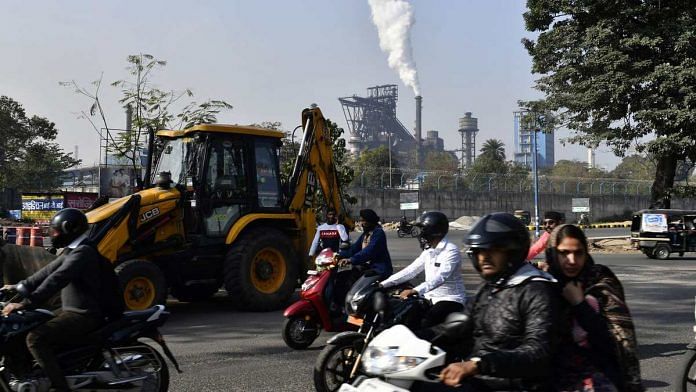New Delhi: The Ministry of Home Affairs, which claims to have brought down by almost 43 per cent incidents of violence in areas affected by left wing extremism, is focusing on infrastructure development in Naxal-affected states, especially Jharkhand.
Under the Special Central Assistance scheme focusing on infrastructure development of these areas, Rs 1,775 crore has been released to 10 states in the last three years, with 44 per cent of it (Rs 773.33 crore) going only to Jharkhand.
The 10 Naxal-hit states in the country are Chhattisgarh, Jharkhand, Bihar, Odisha, West Bengal, Maharashtra, Telangana, Andhra Pradesh, Madhya Pradesh and Uttar Pradesh.
Replying to a question in the Lok Sabha, Minister of Home (State) G. Kishan Reddy said in a written reply that the money was released for the purpose of building roads, post offices and opening bank branches and ATMs in the states.
To address left wing extremism (LWE) holistically, he said, the Government of India approved a National Policy and Action Plan in 2015 envisaging a multi-pronged strategy involving security-related measures, development interventions, ensuring the rights and entitlements of local communities etc.
Reddy said while the government has taken several measures, such as construction of roads, installation of mobile towers, improving network of banks, post offices, health and education facilities to ensure development in LWE-hit areas, a lot is being done on the security front too.
A separate security fund
Under a special Security Related Expenditure (SRE) scheme and Special Infrastructure Scheme, another Rs 243 crore has been released to Jharkhand in the last three years.
Apart from this, the central government has provided the states with Central Armed Police Forces (CAPF) battalions, training, and provision of helicopters along with funds for modernisation of state police forces, equipment and arms.
Replying to a question in this regard in the Lok Sabha, Reddy said the decision was taken to provide “further impetus” to development in most LWE-affected districts.
Also read: Why ‘giant killer’ BJP rebel Saryu Roy wants to defeat CM Raghubar Das & party in Jharkhand
For better roads and telecom
Apart from flagship developmental schemes being implemented by ministries and departments, Reddy said, some specific schemes for road building and improving telephone connectivity are being implemented in the LWE-hit areas.
“A Road Requirement Plan-I (RRP-I) envisages construction of 5,422 km roads. So far 4833 km roads have been completed. This includes 760 km roads in Jharkhand, of which 707 km has been completed,” Reddy said in his written reply.
He also said 5,065 km roads, including 615 km in Jharkhand, have been sanctioned under the Road Connectivity Project for LWE areas (RRP-II).
“Of these 1062 km roads, including 184 km roads in Jharkhand, have been completed, so far,” he said.
On improving telecom connectivity, Reddy said 2,335 mobile towers, including 816 in Jharkhand, have been installed in phase one of the mobile tower project, with installation of 4,072 towers (including 1,054 for Jharkhand) approved for phase two.
Post offices, bank branches
In ensure financial inclusion of the LWE-affected areas, the Department of Posts has opened 1,769 post offices in the states.
Out of these, 654 are in Jharkhand, the minister said.
The Department of Financial Services has also opened 879 new bank branches and 869 ATMs, and appointed 7,456 banking correspondents in the last four and a half years in 30 districts most affected by LWE.
These include 294 bank branches, 319 ATMs and 2,875 banking correspondents in Jharkhand alone.
Reddy also said the “steadfast implementation of the policy” has resulted in consistent decline in violence and shrinkage in geographical spread.
“Only 10 districts account for 2/3rd of LWE violence,” Reddy stated.
“The LWE related incidents of violence between May-2014 to April-2019 have been 43% lesser while compared with the preceding 5 years period. During the same period the number of incidents has declined by 45% in Jharkhand. The decline trend continues in 2019,” he said in the written reply.
Also read: Why Jharkhand elections can determine the course of Indian politics







Election time?